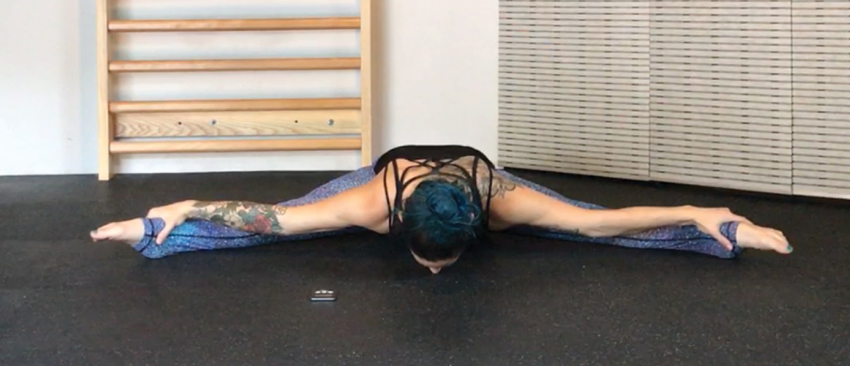A Quick and Easy Fix For Tight Adductors

You've heard of tight hips, but have you heard of tight adductors? Having tight and restricted hips is an issue many adults experience in our modern world; desk jobs, hours of sitting, driving or remaining in one position keep us from experiencing full daily mobility. But what many of us don’t think about, is that much of this restriction is actually coming from the groin and inner thighs— aka the adductors.
Furthermore, researchers analyzed hip and groin injuries across collegiate athletics from 2009-2014 and reported that adductor tears accounted for roughly 25% of all of them (most common in sports that involve kicking, skating and sudden changes of speed or direction).
So, we know it's a broad issue, but the question stands: How to fix it? Before we get to that let’s look at what the adductor muscles do.
The main function of your adductors is to pull your legs towards each other (think of adding to your body). They stabilize movement, play a major role in creating rotation in the hips, and they stabilize the knees.
When the adductors become tight, the resulting instability can cause arch problems or collapse your knees inward slowly over time. Many know this as ‘knock knees.’ But when your adductors are both strong and flexible, they can be a great source of power and stability. Read on for ways to keep your adductors mobile and fully functional.
The Pancake Stretch for Adductors
One of the most effective stretches for your adductors is the pancake stretch, inspired by the GB Stretch Series. To achieve the best results from this pancake position, it is key to follow these simple cues described below.

Cue #1: Arch Your Lower Back so Your Pelvis Tilts Forward
The first and most important training secret for stretching your adductors is to place your hips in the correct position. From seated, straddle your legs to form a 90-degree angle in the groin area. This will allow you to rotate the top of your pelvis forward so that you are slightly arching your back. Only in this position will you be able to lengthen your hamstrings and inner thighs for a deep stretch.
Cue #2: Straight Knees
While bending your knees may be necessary if your inner thighs are extremely tight, the most effective way to perform this stretch is with your knees straight. This is done by flexing your quad (the muscle in the front of your thigh) tightly. You do this, then your knees are straight.
Cue #3: Don’t Forget to Point Your Toes
It’s rude to point fingers at people. But nobody ever said anything about the toes. Doing so will help you better activate your quads and hip flexors to pull you into a deeper stretch. It also straightens your knees to assure the stretch is most focused on the groin.
Good Mornings
Say goodmorning to those sleepy hip muscles with this amazing hip mobility drill from the GB Online Courses.
Good mornings are an interesting Pancake variation. Not only do they lean into the groin stretch outlined above, but they activate the adductors for the press back out of the pancake. It's an example of active mobility you may have heard us preach about at GymnasticBodies.
Because your adductors aren't used to extending and stretching this far, they will not be strong in the active movement back out. This can be intense, so start with a 90˚ angle in your legs (the model above is closer to a full split) and only fold down as much as you are able. It is important to emphasize the arch in your lower back to fully active adductors.
If you enjoyed this post, and have found it to be helpful in gaining mobility and getting rid of the tight spots, GymnasticBodies Middle Split Stretch Series will unlock even more adductor strength training secrets.

